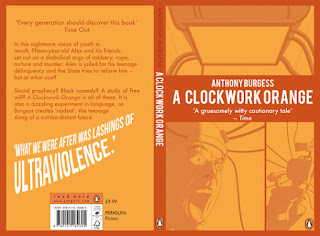For the Shutterstock brief, entrants are asked to illustrate three of the "seven basic plots" outlined in Christopher Booker's book of the same name. The three that resonated the most with me were:
-The Quest
-Comedy
-Voyage and return
At the D&AD briefing a couple months ago the talkers commented on the importance of telling a story with your work - looking for meaning, messages, hopes and fears. I want to keep the story simple but relevant to me, my peers and anyone else that may find interest in the work.
Immediately the most relevant story to me was the story of university - I want to see if it's possible to distill this story into three images that people will relate to.
I did research into the general theory of Booker's book and one key detail was that there is only ever one character of primary concern: s/he is with who we identify. s/he develops gradually - everyone else is only a representation of some aspect of the hero's inner state. The character must be identifiable.
I then did research into the three plots above and how they have been broken down. In italics is how these can be related back to the university story.
The Quest:
-Set-up: Hero must leave their everyday life to search for an object, location or information.
-The Call: Hero finds it impossible to remain at home - there is a 'visionary direction' explaining where
to go, how to get there, etc. There's a 'distant life-renewing goal'
A letter comes from a university in a new city. The letter or a self-printed map contains visionary direction where to go and how to get there.
-The Journey: Various obstacles will be overcome by the hero over hostile terrain.
Student will carry a large portfolio through treacherous winter weather, on public transport and in a new city.
-Arrival and frustration: Hero is within sight of the goal but now has a series of obstacles to overcome.
Student arrives at university, but must now have a portfolio review and interview
-Final ordeals: A final series of tests
The student must wait a period of time before knowing the outcome of the interview
-The Goal: Hero has won it all - 'an assurance of renewed life stretching infinitely into the future'.
Student has been successful at the interview. Their renewed life comes in the form of a new university life in September
Comedy:
-Set-up: Grand mesh of relationships among a large cast, rooted in miscommunication. There is a fog of misunderstanding maintained by a dark figure.
Student meets various people when arriving at university, perhaps from different areas of the country which can cause miscommunication and differences in how people are understood. Perhaps have disagreeable flatmates.
-Under the shadow: Little world in which people are under the shadow of confusion, uncertainty and frustration and are shut up from one another.
Students are in a lecture theatre, potentially hungover, bored, inattentive, but must remain quiet.
-Tightening the knot: The confusions gets worse until the pressure of darkness is at its most acute and everyone is in a nightmarish tangle.
Student is facing deadlines and is under huge pressure.
-Resolution: Perceptions are changed through previously unrecognised things coming to light. Shadows are dispelled, joyful union.
Deadlines arrive and student hands in on time, celebrates.
Voyage and Return:
-Set-up: Obvious plot for dreams - Hero enters a magical land where normal rules don't apply, explore happily for a while, then encounters a darker side of things, conquers, escapes and returns home more mature than before.
-Anticipation stage: Hero's 'consciousness is in some way restricted', most commonly due to youth or some serious flaw. Could also be a blow to the head - Character awakens in an alternate reality.
Student's life inexperience pre-university. Student finds himself at university living alone for the first time.
-Dream stage/initial fascination: New world is puzzling and unfamiliar, but cool. Hero explores but can never feel at home.
Student is getting used to new freedom, learning to live by themselves and enjoying it.
-Frustration stage: 'Mood of adventure' starts to darken. Options disappear, Hero starting to get hemmed in.
Student faces difficulties of university life such as work and deadlines, balancing social life.
-Nightmare stage: Hero looks doomed
Dissertation
-Thrilling escape and return: When it looks like it's over, Hero makes a dramatic exit back to original world.
Student graduates and finds themselves back at home, now a graduate, more mature.
But question: Was there any character development? Have they been fundamentally changed, was it a dream?
People question university these days. This image could allow for debate.
The plan is to pick one stage from each of the story and then illustrate it.












































